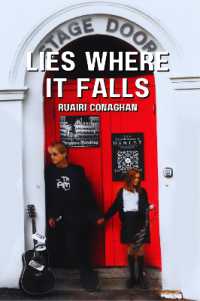Full Description
From the American Civil Rights Movement to the Arab Spring, protest movements have been at the heart of pivotal points in our history. Analysis of the language of these movements on television, print news sources and the more recent social media platforms like Twitter, provides a fascinating insight into the dynamic linguistic phenomenon that has often impacted society in dramatic ways through the promotion of change.Looking at multiple genres of literature and taking a cross-cultural perspective, The Language of Protest provides:Understanding of what is `protest language' and how it is createdAnalysis of the common patterns in the production and use of protest language over time such as use of the concept of "us versus them"Examination of how these common patterns is being reconfigured into contemporary renderings via the new social mediaExploration of the relationships between dominant language and protest languageExamples of protest language from movements that include the American Civil Rights Movement; the Arab Spring; the Guatemalan Electricity protests; and the Occupy MovementLinks to further readings and video clips of protest movements from around the world.The Language of Protest will be of interest to those who are studying and analysing protest language, speech act theory, and language and politics.
Contents
Introduction of The Language of ProtestUnit One: Defining Protest: What is it?Unit Two: Making It Happen: Generating the Language of ProtestUnit Three: Slogans and Chants: Language of Protest for the Average ActivistUnit Four: Speeches and Other Writings: Language of Protest by Grassroots LeadershipUnit Five: Poetry and Song: Language of Protest from the Heart for EveryoneUnit Six: Virtual Reality: The Language of Protest in the Era of Social Media








